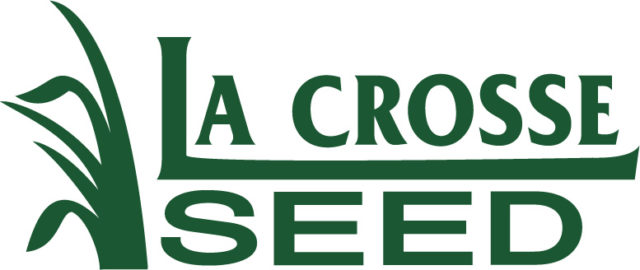There is also an often-heard statement that one of the old varieties that Dad raised was superior to any of the varieties available today. A local seed dealer recently told me that he gets calls for Vernal every year. That caused me to look at our recent variety data and to see how this variety compared.
I reviewed the data for 15 three-year variety trials conducted by Washington State University in which Vernal was included as what we call a “historical check.” In those 15 three-year studies, Vernal was the lowest-yielding variety in 14 of the studies and second-to-the-lowest in the other.
My purpose for mentioning this is not to be critical of a good old variety but to point out that alfalfa breeders are constantly improving alfalfa varieties and our data proves it.
Dan Putnam, extension alfalfa specialist from University of California–Davis, has stated “A conservative estimate on the difference the best-suited variety can make would be in the range of $600 to $700 per acre, given the current alfalfa market. This is possible by paying as little as $2 per pound more for a 20-pound per acre seeding rate, or $40 per acre.”
Dan further states, “The first thing to consider in selecting an alfalfa variety is yield, but it’s not the only thing. Yield is probably the most important trait of an alfalfa variety since it integrates many other traits, including fall dormancy and pest resistance.”
University researchers, not just seed salesmen, continually point out that performance of a variety is the key question for a grower to keep in mind, not the price of the seed. They recommend that growers look at multi-year data from as many locations as possible and never just a single year. It is important how a variety performs in the second and third seasons. It is recommended that growers consider the top third of the varieties in a set of trials, not just the top one. Pay attention to the statistics. Many good varieties perform well and often have similar yields.
Once you have found varieties that yield well in your area consider their disease resistance ratings. Remember if your farm has a problem with a certain disease or insect make sure that you select varieties with the greatest resistance available to that pest. It is a good idea to consider strip trials of promising varieties on your own fields.
It is wise to do a little homework. Try to find as many trials as you can. Pay particular attention to local trial data but don’t overlook trials from other areas. Look for consistency of performance to reduce your risk. Get your pencil and calculator out and determine what yield increase is needed to pay for the extra cost of higher-yielding varieties.
For example, recently I did a computer search and pulled up an alfalfa variety trial from the University of Wisconsin. The trial was planted in 2005. I compared the top five varieties with the bottom five varieties and compared their three-year yield totals. In this particular trial the top five varieties’ average yield was 6.37 tons per year while the bottom five varieties’ was 5.37 tons per year. At the time the USDA Market News reported that the average price for alfalfa was $153 per ton.
Let’s make a simple economic comparison between the top varieties and the bottom varieties. What is that 1 ton per acre per year worth? Let’s assume a grower plants one of the top varieties on a 126-acre circle and achieves the ton extra yield at $153 per ton. Multiple 126 times $153 and you get $19,278 increased income per circle per year. Let’s assume that you keep the field in for just three years. Three times $19,278 equals $57,834 in extra income per 126-acre circle over the life of that original seed purchase. Now let’s assume that you plant 20 pounds of seed per acre and that the cheaper seed is running around $2.75. How much could the higher-yielding seed cost to break even? $22.95 per pound! (One-ton increase at $153 per ton times three years equals $459 dollars increased income divided by 20 pounds alfalfa seed per acre.)
Now let’s look at the same data another way. How much of a yield increase will justify the difference in seed cost? Let’s again assume that the low-priced seed is around $2.75 per pound and the higher-priced seed is around $4. That is an increase of $1.25 per pound or $25 per acre at a 20-pounds-per-acre seeding rate. If alfalfa is returning $153 per acre and we assume the stand will be in for three years the cost per acre for the higher-priced seed is $8.33 per acre, and the alfalfa would have to yield 0.0544 additional ton per acre (109 pounds) to pay for the added seed cost.
My father used to say, “A poor farmer’s ways are poor.” The message is similar to the saying, “A penny wise and a dollar foolish.” It is tempting to save a little money up-front by buying cheap seed, particularly in these tough economic times, but be careful that the decision doesn’t cost you significant money in the long run. Do your homework. Pick a top-yielding, adaptable variety with resistance to the pests common to your farm.
Washington State University conducts alfalfa variety trials in cooperation with the Washington State Hay Growers Association. Go towww.wa-hay.orgto find the results. The NAFA website atwww.alfalfa.orgis home to the 2010 edition of “Winter Survival, Fall Dormancy & Pest Resistance Ratings for Alfalfa Varieties.” FG
Phil Petersen
Agronomy Extension Educator
Washington State University
phil_petersen@wsu.edu
Forage Industry News
How to select an alfalfa variety
BUYER'S GUIDE
VISIT OUR BUYER’S GUIDELa Crosse Seed has paired an unmatched portfolio of high quality forage, cover crop and turf seed with knowledgeable and experienced sales and support staff since 1919.
DLF is a global seed company owned by Danish grass seed farmers with 2,200+ employees in 22 countries. As the global market leader in forage and turf seed supplying seeds to more than 100 countries, DLF has a complete supply chain within forage an...
-
LATEST NEWS
-
-
-
-
December 2024 new product rollout
December 3, 2024
-








